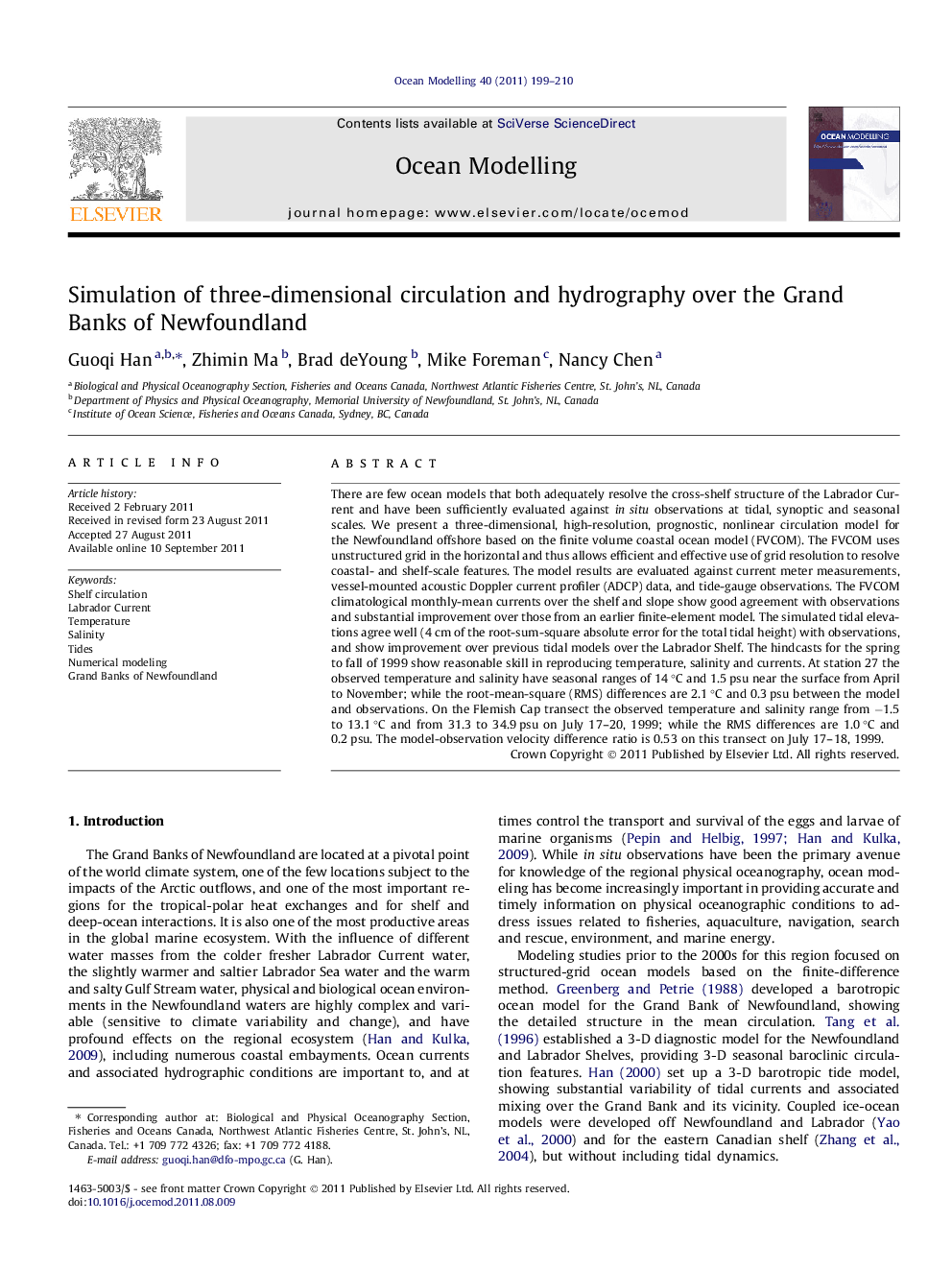| Article ID | Journal | Published Year | Pages | File Type |
|---|---|---|---|---|
| 4552215 | Ocean Modelling | 2011 | 12 Pages |
There are few ocean models that both adequately resolve the cross-shelf structure of the Labrador Current and have been sufficiently evaluated against in situ observations at tidal, synoptic and seasonal scales. We present a three-dimensional, high-resolution, prognostic, nonlinear circulation model for the Newfoundland offshore based on the finite volume coastal ocean model (FVCOM). The FVCOM uses unstructured grid in the horizontal and thus allows efficient and effective use of grid resolution to resolve coastal- and shelf-scale features. The model results are evaluated against current meter measurements, vessel-mounted acoustic Doppler current profiler (ADCP) data, and tide-gauge observations. The FVCOM climatological monthly-mean currents over the shelf and slope show good agreement with observations and substantial improvement over those from an earlier finite-element model. The simulated tidal elevations agree well (4 cm of the root-sum-square absolute error for the total tidal height) with observations, and show improvement over previous tidal models over the Labrador Shelf. The hindcasts for the spring to fall of 1999 show reasonable skill in reproducing temperature, salinity and currents. At station 27 the observed temperature and salinity have seasonal ranges of 14 °C and 1.5 psu near the surface from April to November; while the root-mean-square (RMS) differences are 2.1 °C and 0.3 psu between the model and observations. On the Flemish Cap transect the observed temperature and salinity range from −1.5 to 13.1 °C and from 31.3 to 34.9 psu on July 17–20, 1999; while the RMS differences are 1.0 °C and 0.2 psu. The model-observation velocity difference ratio is 0.53 on this transect on July 17–18, 1999.
► The first prognostic model for the Grand Banks based on the FVCOM approach. ► The model temperature and salinity agree well with observations at the seasonal scale. ► The computed currents agree approximately with observations at the synoptic scale. ► The simulated tidal elevation has a root-sum-square accuracy of 4 cm. ► The FVCOM produces better monthly circulation climatology than previous models.
